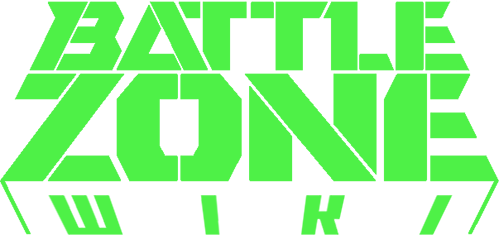| Information |
|---|
| Date: 1999 |
| Source: pandemicstudios.com |
Transcript[]
Part One[]
As Allied forces rolled into Berlin, the remaining Nazi officials in charge of the space program scrambled to destroy all records of their work. And indeed they did a fantastic job, hurling mountains of documents into the flames of the burning city before Himmler's SS finished the job by eliminating the officials themselves.
It was pure dumb luck that an American foot soldier, checking for survivors in an abandoned Nazi communications bunker, found underfoot a curious memo from one General Kranken. His name and battalion were unknown to American codebreakers, but his security clearance checked out and the memo survived even the closest scrutiny to prove authentic.
The memo detailed Kranken's plans for one final nazi Blitzkrieg of unimagined proportions. The lunar forces would land in the hostile environment of the Arctic region, beyond the reaches of any earthbound military. From there they would pour out into every continent, first eliminating the unsuspecting armies of the United States and Russia, then later seizing control of the weaker enemy nations.
Part Two[]
Though it read like the wild fantasies of a children's' adventure serial, President Truman knew he had no choice but to take the memo seriously. Watching the skies and preparing for an invasion became the top priority of military scientists and engineers.
The following sketches were developed at this time by the U.S. government, under the supervision of Dr. Wilhelm Arkin; one of the few surviving engineers from the Nazi space program and a member of Jonathan Beardsley's original research station in the 1930's. With Beardsley uninvolved in the military aspects of the program, Arkin's knowledge was an invaluable, though certainly undesirable, necessity.
This last paragraph is a little unclear - I'm not sure why a Nazi is cooperating with the U.S. Also, the last sentence is particularly unclear - not sure what Beardsly being uninvolved with the military aspects has to do with Arkin.
Unit Gallery[]
Badger Prototype[]
- With only a brief run in combat use, the original Badger design was an ambitious failure. Its gun mount delivered a powerful punch that could pierce even the thickest armor with a quick spray of bullets, but its insufficient ground attachments often left it toppled on the ground before it could do any real damage. This embarrassing oversight was later remedied with the STAB hooks of later models.
Early Recycler[]
- The result of countless setbacks and revisions, the earliest NSDF Recycler didn't appear on the battlefield until late in the German conflict. And even then, its astonishing feats of engineering took years to perfect. In fact, it took an even longer period of fast, consistent service to erase the Recycler's stigma of being an unreliable and potentially dangerous device.
Razor Prototype[]
- At first glance, the Razor prototype looks like a crude hybrid of a jet fighter and hovercraft. But closer inspection shows that "crude" is far too weak a word. Rushing to meet a deadline, NSDF technicians literally sawed the front end off a grounded P-47 and mounted it onto their engine base. The gamble paid off. The bird flew and it put them on track, with later improvements resulting in the Razor scout used during the CCA conflict.
Bobcat[]
- Having proven itself during World War II, the U.S. knew that a strong and versatile tank would be crucial to fighting on other worlds. This early design later became the Bobcat. It was all it was intended to be and more, outperforming anything in the German arsenal. The unit was so effective, in fact, that it remained in use during the CCA conflict of the late 60's and 70's - more than twenty years after it first rolled off the assembly line.
Pilot EVA Suit[]
- If war were to be taken to the stars, one of the greatest challenges would be to keep soldiers alive in the harsh environs of space. A suit had to be devised that would not only sustain life, but also protect soldiers under combat conditions. The result offered a minimum of flexibility and even less comfort, but it got the job done. Pilots could exit their vehicles freely and hold their own on a planet's surface.













